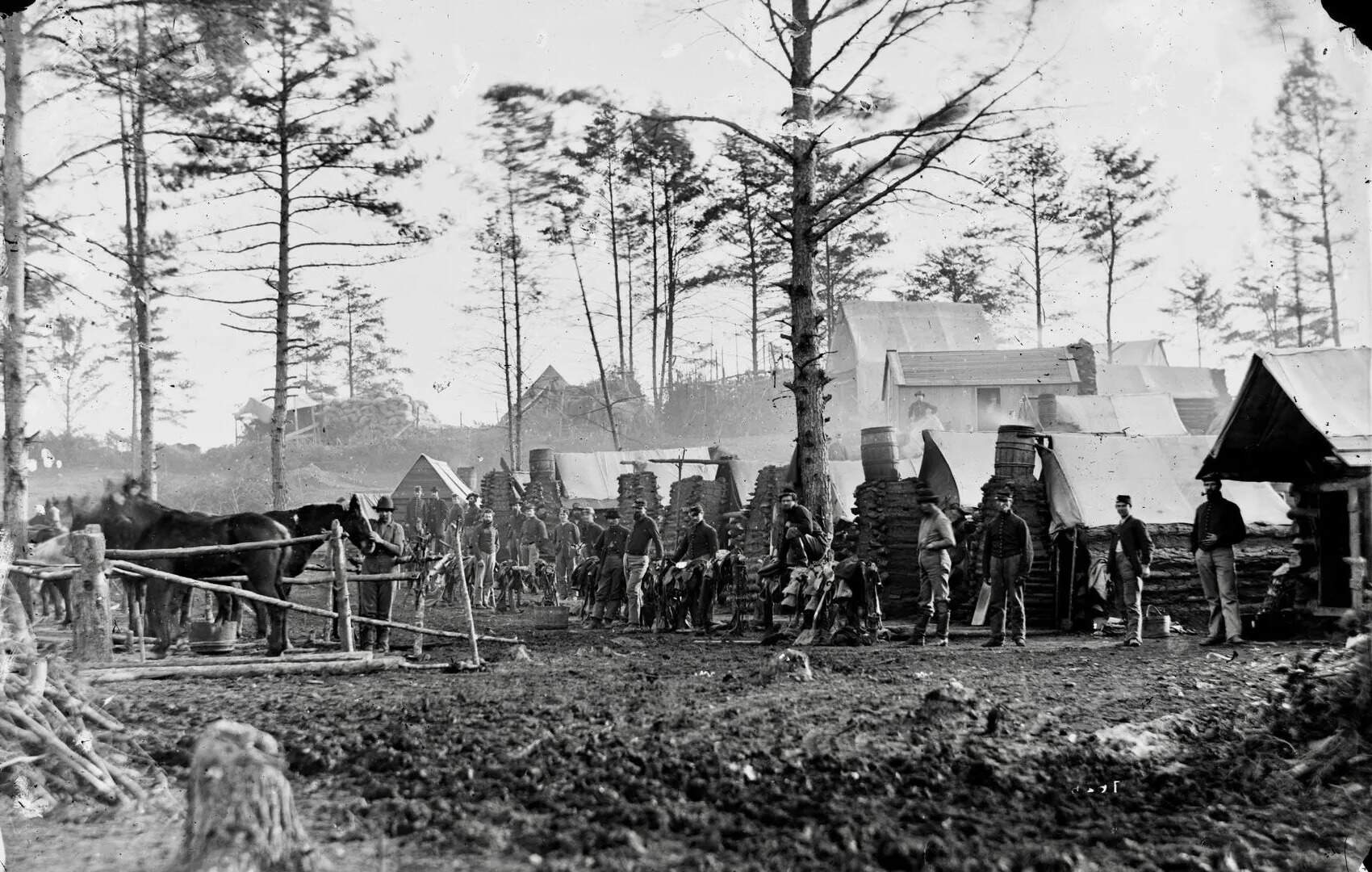Mysteries Of Civil War Winter Quarters In Virginia

Have you ever wondered how soldiers survived the harsh winters during the Civil War? Civil War winter quarters in Virginia hold many stories of resilience and ingenuity. These makeshift homes provided shelter from freezing temperatures and harsh conditions. Soldiers built log cabins, dugouts, and even used tents to create a semblance of warmth and comfort. They used whatever materials they could find, from logs to mud, to construct these shelters. Life in these quarters was tough, with limited food, clothing, and medical supplies. Yet, the camaraderie and determination of the soldiers shone through. Let's delve into the fascinating world of these winter quarters and uncover the secrets of survival during one of America's most challenging times.
Discovering Civil War Winter Quarters in Virginia
During the Civil War, soldiers faced harsh winters in Virginia. They built winter quarters to survive the cold months. These sites hold stories of resilience, strategy, and daily life during the war. Let's explore some of these fascinating locations.
1. Brandy Station Winter Quarters
Brandy Station in Culpeper County served as a significant winter camp for the Union Army. The area saw thousands of soldiers constructing huts and makeshift homes.
- Culpeper County: Soldiers built log cabins and dugouts, creating a small city of military life.
- Graffiti House: This historic house still bears the marks of soldiers who left drawings and messages on its walls.
- Fleetwood Hill: Known for its strategic importance, it provided a vantage point for Union forces.
2. Rappahannock Station Winter Quarters
Rappahannock Station, now Remington, was another key site for winter quarters. Both Union and Confederate troops used this area during different periods of the war.
- Remington: Soldiers constructed huts along the Rappahannock River, using local resources.
- Kelly's Ford: This crossing point saw significant activity and skirmishes during the winter months.
- Historic Churches: Many local churches served as hospitals and shelters for soldiers.
3. Fredericksburg Winter Quarters
Fredericksburg witnessed intense battles and served as a winter refuge for troops. The town's buildings and surrounding areas became temporary homes for soldiers.
- Chatham Manor: This grand estate became a Union headquarters and hospital during the winter.
- Marye's Heights: Soldiers camped on these strategic hills overlooking the town.
- Sunken Road: Known for its role in the Battle of Fredericksburg, it also saw winter encampments.
4. Petersburg Winter Quarters
Petersburg's long siege meant soldiers spent multiple winters in the area. The trenches and fortifications became their homes during the cold months.
- Blandford Church: This historic church served as a hospital and shelter.
- Fort Stedman: Soldiers built winter quarters around this key fortification.
- The Crater: The site of a massive explosion, it also saw winter encampments.
5. Winchester Winter Quarters
Winchester changed hands multiple times during the war, with both Union and Confederate troops using it as a winter base.
- Fort Loudoun: Originally built by George Washington, it saw renewed use during the Civil War.
- Stonewall Jackson's Headquarters: This museum offers insights into winter life for Confederate soldiers.
- Kernstown Battlefield: The site of two battles, it also served as a winter camp.
6. Manassas Winter Quarters
Manassas, known for its two major battles, also hosted winter quarters for Confederate troops.
- Manassas National Battlefield Park: This park preserves the history of the area, including winter encampments.
- Henry Hill: Soldiers built huts on this strategic high ground.
- Stone House: Used as a hospital, it sheltered many soldiers during the winter.
7. Richmond Winter Quarters
As the Confederate capital, Richmond saw extensive winter quarters for its defending troops.
- Chimborazo Hospital: One of the largest hospitals of the war, it treated countless soldiers.
- Belle Isle: This island in the James River housed a Confederate prison camp.
- Tredegar Iron Works: The industrial heart of the Confederacy, it provided supplies for winter quarters.
8. Appomattox Winter Quarters
Appomattox, known for the war's end, also saw winter quarters for Confederate troops.
- Appomattox Court House: The village where the war ended, it hosted winter camps.
- McLean House: The site of the surrender, it also saw winter activity.
- Clover Hill Tavern: Soldiers used this historic tavern for shelter and supplies.
The Legacy of Civil War Winter Quarters in Virginia
Civil War winter quarters in Virginia hold a unique place in history. These sites reveal how soldiers endured harsh winters, built makeshift shelters, and maintained morale. Visiting these locations offers a glimpse into the daily lives of those who fought in the war. The remnants of cabins, trenches, and artifacts tell stories of resilience and survival. Exploring these quarters helps us appreciate the sacrifices made and the strategies employed during the war. They serve as a reminder of the human aspect of conflict, beyond battles and strategies. Understanding these winter quarters deepens our knowledge of the Civil War and its impact on soldiers' lives. Next time you're in Virginia, consider visiting these historical sites to connect with the past and honor those who lived through such challenging times.

